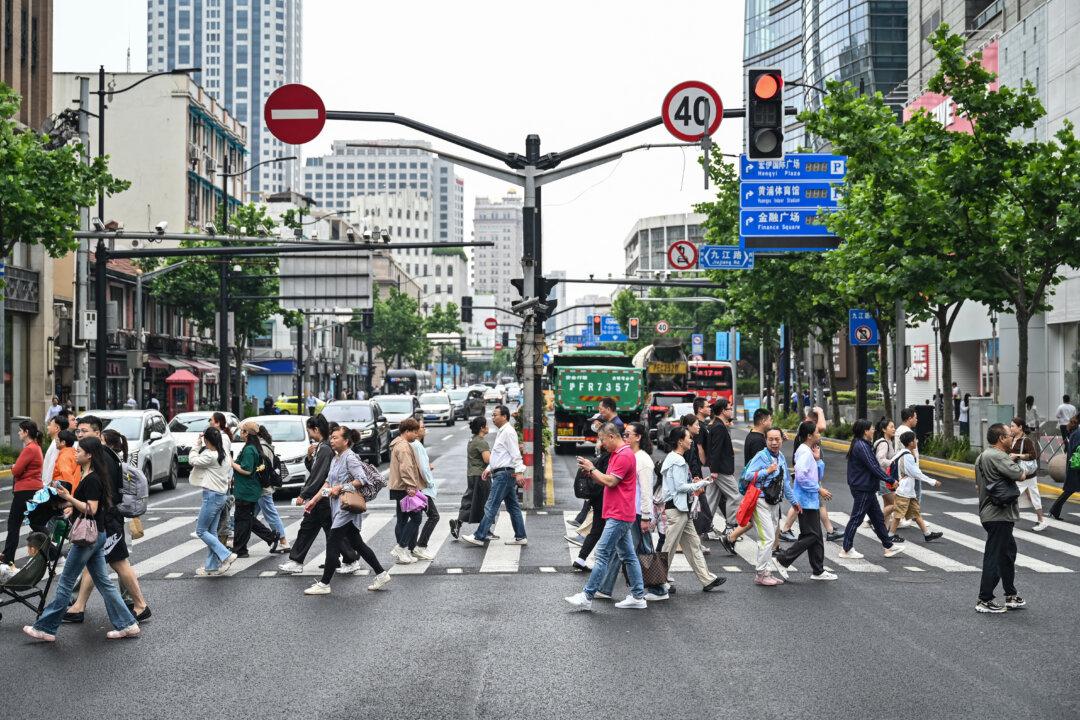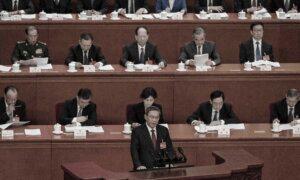China’s latest inflation figures should keep the authorities in Beijing awake at night. The complete lack of consumer inflation announces that Chinese consumers have deeper problems than the property crisis, bad as that is. At the same time, declining producer prices announce that in addition to consumer problems, the planners in Beijing have made matters worse by distorting China’s economy.
The latest price figures from Beijing’s National Bureau of Statistics make for troubling reading. Consumer prices rose by a mere 0.2 percent in June from levels a year ago. This result was far below the consensus expectation for a 0.4 percent rise and even May’s 0.3 percent rise. For countries suffering from inflation, such figures might be welcome, but in an economy like China’s that needs desperately to stimulate consumer spending, it speaks to failure.
Meanwhile, prices at what Chinese statisticians refer to as the “factory gate” and what the rest of the world refers to as producer prices were in June 0.8 percent below levels of a year ago. June, then, is the 21st consecutive month of such declines. This persistent downward price pressure screams oversupply. Chinese factories are producing more than either Chinese or foreigners want.
These problems have their roots in lackluster Chinese consumers. Their reluctance to spend is hardly a surprise. China’s general economic slowdown has crimped wages, and where wages have not declined absolutely, they have disappointed the expectations formed during the economy’s long period of rapid growth. The weight of these developments has fallen hardest on the middle and lower ends of the economy’s income distribution.
The legacy of lockdowns and work interruptions in both the COVID-19 pandemic and the long period following when Beijing imposed its zero-COVID policy has no doubt given Chinese workers the sense that they cannot earn as they once thought they could and accordingly further eroded confidence among consumers. If this were not enough, the property crisis has brought down residential real estate values. According to the China Real Estate Information Corp., 100 of the country’s biggest real estate companies have reported that prices are down by some 17 percent from a year ago. Since most Chinese have the bulk of their wealth tied up in their home, feelings of wealth and a willingness to spend have suffered.
Accordingly, China’s exports to the EU and the United States have fallen over the past five months, 10 percent with the former and 17 percent with the latter. Despite these declines, Chinese exports have risen overall, largely because of a 60 percent surge in exports to Russia, about a 17 percent increase in exports to Latin America, and a 7 percent jump in exports to Southeast Asia. The increased sales in Russia clearly reflect the broad Western embargo against Russia, leaving China as one of its only sources. The sales increases in Latin America and Southeast Asia mostly reflect shipments of parts to Chinese factories placed there to get around American and European restrictions. The United States and the EU are taking steps to thwart this subterfuge.
Even if the Americans and Europeans were more welcoming of Chinese products, Beijing’s effort to build up manufacturing capabilities as a substitute for slack consumer demand would have been a mistake. For years now, various international bodies, such as the International Monetary Fund, have advised Beijing to depend less on exports of manufactures and more on a domestically driven growth model. Beijing has, at times, embraced just this advice and claimed such an adjustment as its policy.
The emphasis on manufactures Beijing decided on last year flies in the face of this needed fundamental adjustment and, because of changing attitudes in the United States and Europe, was especially ill-timed. The outright drop in factory-gate prices speaks loudly to the gravity of that mistake and the presence of yet another problem in China’s economy.







